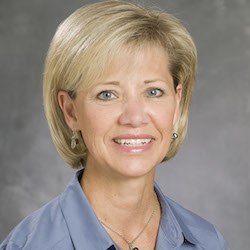by Lori Knutson, RN, BSN / Integrative leadership is becoming a social imperative, especially when you consider the elements of Integrative Leadership in the following way:
Integrative: “Serving or intending to unify separate things”
Leadership: “Going before or with to show the way”
Those of us who have been in the integrative health field know that health is much more than a symptom, disease, illness, or disability. These are the physical manifestations of the world around us and the world within us. The science of epigenetics now validates much of what we have observed and experienced as integrative health providers and practitioners, and as informed human beings.
 Our new scientific discoveries in health and medicine, our evolving knowledge of the environment, the growing diversity of people, and the political and economic landscape are the separate parts of a dynamic and complicated whole, which many say is on the verge of crisis. Integrative leaders have an opportunity to impact all of these social and human components. Whether society moves in the direction of wholeness or fragmentation, disease will be determined by the wholeness of those who lead. It requires a dramatically different way of “being” in those who lead. I believe now is the time for integrative leadership — it is our social imperative.
Our new scientific discoveries in health and medicine, our evolving knowledge of the environment, the growing diversity of people, and the political and economic landscape are the separate parts of a dynamic and complicated whole, which many say is on the verge of crisis. Integrative leaders have an opportunity to impact all of these social and human components. Whether society moves in the direction of wholeness or fragmentation, disease will be determined by the wholeness of those who lead. It requires a dramatically different way of “being” in those who lead. I believe now is the time for integrative leadership — it is our social imperative.
AN EMBODIED PRACTICE
Integrative Health is an embodied health movement. An embodied health movement is a social movement with a shared consciousness and shared physical experience that impassions people to transform not only themselves but also society.
Embodied health movements have three unique component1:
- They introduce the biological body to social movements, especially with regard to the embodied experience of people with the disease. We see this with cancer and social collective action like marches for the cure on breast cancer.
- They typically include challenges to existing medical/scientific knowledge and practice.
- They often involve activists collaborating with scientists and health professionals in pursuing treatment, prevention, research and expanded funding.
Our shared consciousness is the collective awareness that our “sick” care system is not wholly equipped to meet the “health” needs of society. Our shared physical experience is the epidemic of chronic health conditions that is impacting individuals, generations, our economy, and our future. We have reached a social imperative regarding the health and wellbeing of our society. The “sick” care system itself has become a chronic social condition. We need a true “health” care system that sees the whole of human beings versus our parts that need to be fixed. It is not working! We have been embodying a social ill; it is time to embody wholeness.
INTEGRATIVE LEADERSHIP AS AN EMBODIED PRACTICE
Leadership is often put in context of a hierarchy, someone who has the command  and control of people, things, and processes. External power. The command and control form of leadership may work well when the person in the formal leadership position holds all of the knowledge and information that is required to achieve certain ordained results. However, in the panacea of today’s technology, knowledge and information is available to anyone who wishes to seek it. There is a new freedom to become more because we are aware there is more.
and control of people, things, and processes. External power. The command and control form of leadership may work well when the person in the formal leadership position holds all of the knowledge and information that is required to achieve certain ordained results. However, in the panacea of today’s technology, knowledge and information is available to anyone who wishes to seek it. There is a new freedom to become more because we are aware there is more.
It is of human design to have the construct of a leader and follower(s). We each innately hold certain skills, abilities, and capacities. Not everyone holds the inner state of true leadership. Followers today are looking to leaders who they believe have the capacity to create the space and energy for an emerging possibility. Leaders today must express and personify, or embody, a way of being that exemplifies that which they are impassioned to transform. They connect with an inner source that contains insight to self, and the whole. In today’s environment followers are less willing to give their power away to someone else and more likely to engage in a mutually respectful relationship with someone who envelops a vision of wholeness, and an ability to draw out the gifts of those who align with them to achieve extra-ordinary results.
Otto Scharmer, a researcher at the Massachusetts Institute of Technology and developer of “Theory U”, a systems leadership framework, speaks about the leaders blind spot, a disconnect from the Source from which they lead. He states, “we know a great deal about what leaders do and how they do it. But we know little about the inner place, the source from which they operate”2. It is this fundamental discovery of the blind spot that allows the leader to see what cannot be seen with the eyes, hear what is not said with words, feel what is felt only from the soul, and known from a shared consciousness.
These are the attributes embodied by the Integrative Leader. In integrative health we believe the whole is greater than the sum of the parts. Integrative leaders see the whole and the parts, and have knowingness about what it all means and a vision by which to move forward. Isn’t that what leading is, moving people, a culture, an organization forward to something better and greater for all? Scharmer states, the leader of today is leading from an emerging future. Integrative health is an embodied health movement and it is emerging at an accelerated pace. It requires leaders who embody integrity, authenticity, courage, compassion, empathy, humility and passion.
It also requires these leaders to embody fluidity, foresight, and inclusiveness. They are catalysts in the creative process, trust and empower others to succeed, and develop resilience to the dynamic environments in which they exist.
Lori Knutson, RN, BSN, is both a clinician and healthcare administrator with over 25 years of dedication to the advancement of integrative healthcare. Ms. Knutson is founder and president of Integrative Healthcare Solutions LLC, a consulting firm that partners with individuals and organizations to develop and advance sustainable integrative health initiatives, and core faculty for the Leadership Program in Integrative Healthcare at Duke University.
Link here for PART II





